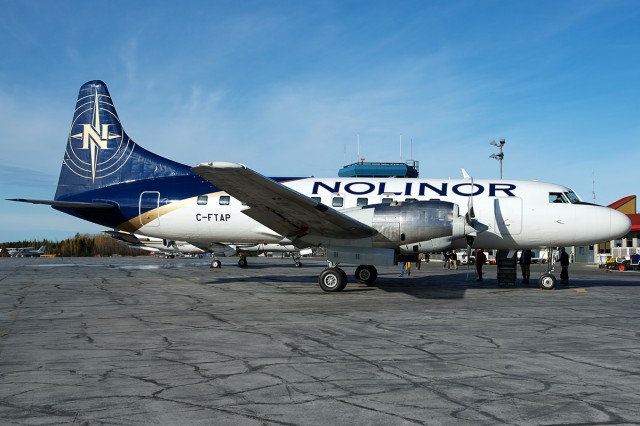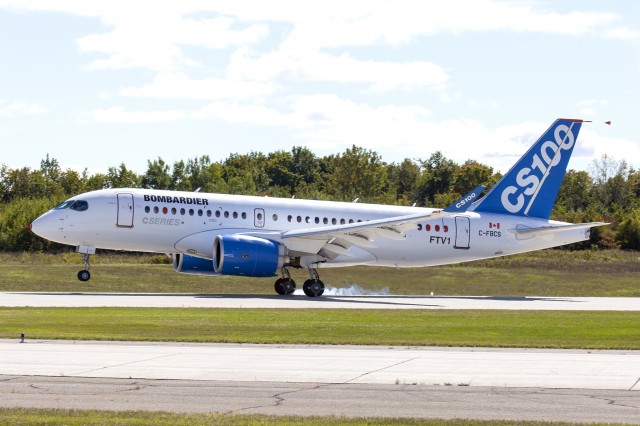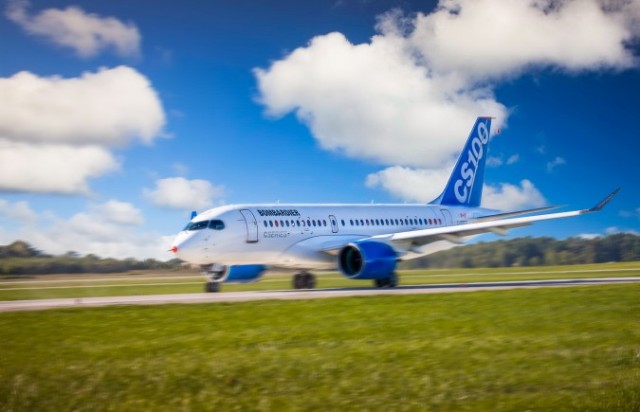
One of Nolinor’s Convair 580s on the ramp at Rouyn-Naranda – Photo: Bernie Leighton | AirlineReporter.com
April 1956 represented a different era in aviation. Local service airlines were popular, fares were regulated, and people still dressed-up to fly. It was also when the three hundred thirty-fourth Convair 440 rolled off the assembly line to start service with Canadian regional airline Time Air.
The Convair 440 was built to American Airlines’ specifications to serve as a pressurized DC-3 replacement. It was equipped with Pratt & Whitney Double Wasp engines and three-bladed propellers, weather radar and a few other features that distinguished it from the original 240s.
After entering service, the Allison Engine Company (now a division of Rolls Royce) devised an offering to re-engine Convair 440s with T56 turbines (the same engine as the Lockheed C-130, P-3 Orion, and Electra II). This added thousands more shaft horsepower, and allowed for not only greater range, but a higher cruising altitude. The conversions were done by Pacific Airmotive and could be done in as short as sixty days.
Time Air sold line number 334 to Canair Cargo, who proceeded to park it in 1998. Nolinor Aviation purchased the airframe and converted it back to passenger use later that year. Throughout the years, the registration has remained the same; C-FTAP. Recently, I had the opportunity to fly on this classic bird.

Bombardier CSeries FTV1 touches down on Rwy 06 at YMX after a successful first flight. Photo: Bombardier Aero
Today, on a brisk Quebec fall morning, Bombardier’s CSeries Flight Test Vehicle 1 (FTV1) took off for the first time at Mirabel Airport (YMX). I, along with hundreds of three thousand Bombardier employees watched the takeoff at just before 10AM ET, and then we waited for FTV1 to return at 12:25 PM. Stands had been set up along the apron, with a somewhat distant view of the runway. Of course, there were airline VIPs watching, including executives from the airlines that have ordered the 177 CSeries planes on the books, and from airlines that Bombardier is trying to convince to order the CSeries.
FTV1’s first flight was 2 1/2 hours long, and was described as an “extremely, extremely successful test flight”, by Bombardier CSeries VP Robert Dewar. FTV1 Chief Test Pilot Chuck Ellis said “How did it fly? Like the predictions, like the sim(ulator).”

CSeries FTV1 is moving so fast, it’s a blur! High-speed taxi tests are underway.
Photo: Bombardier Aero
On Friday, Bombardier’s CSeries Flight Test Vehicle 1 (FTV1) began high-speed taxi testing at Mirabel Airport (YMX). FTV1’s test pilots will run the plane up to 120 knots before putting on the brakes. The tests need to be done with good weather and winds, and on a dry runway.
It sounds like testing is going well, according to Robert Dewar, Vice President and General Manager, CSeries Program. ’œThe aircraft and the flight crew are feeling quite comfortable with the high-speed tests run so far. The crew is reporting that the aircraft is handling beautifully and pending a few more taxi runs, we’ll move into the shimmy testing of the main and nose landing gears whereby the stabilization and vibration, amongst other things, are tested,’ said Mr. Dewar.


